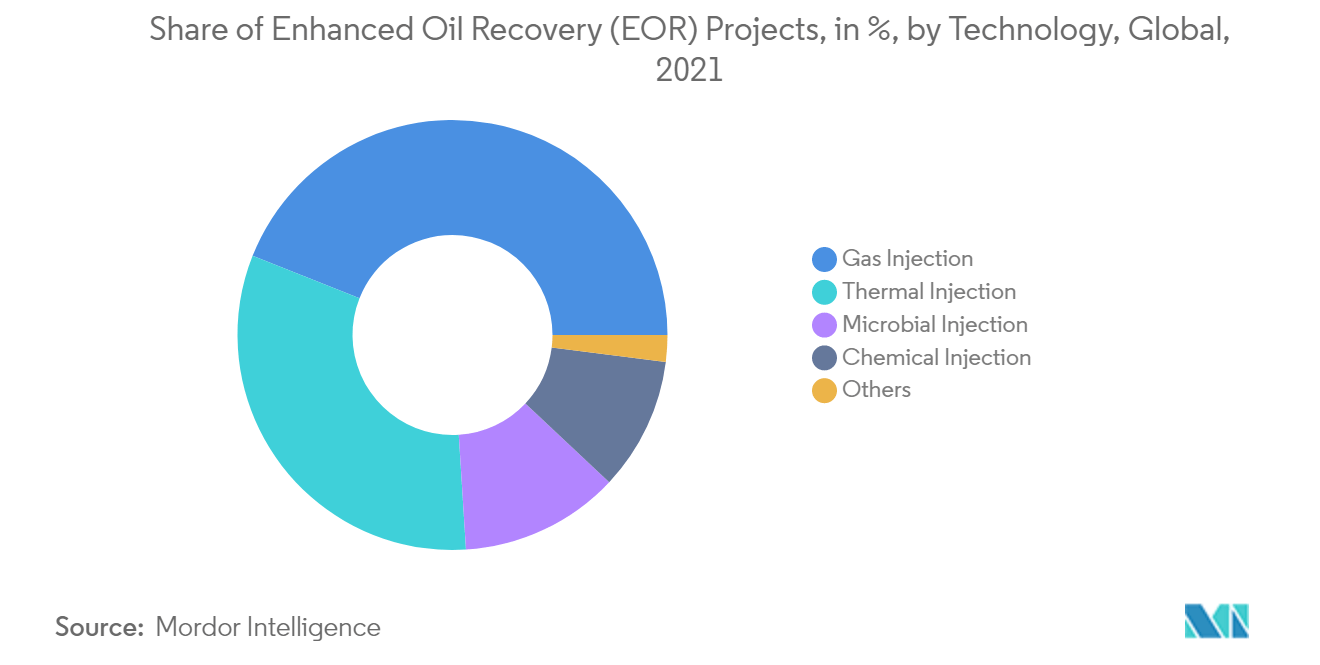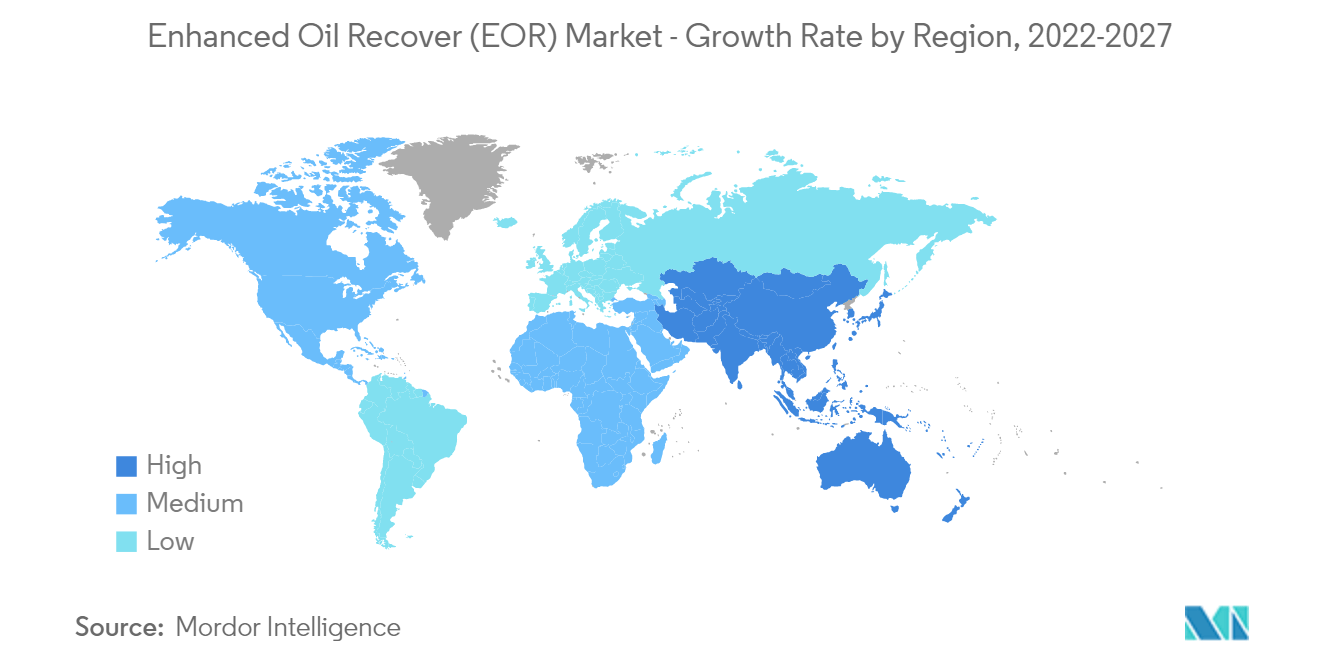Market Trends of Enhanced Oil Recovery (EOR) Industry
This section covers the major market trends shaping the Enhanced Oil Recovery (EOR) Market according to our research experts:
Gas Injection Technique to Dominate the Market
- Gas injection offers advantages, such as reduction of oil viscosity and added pressure in the reservoir for oil production. With an increasing focus on unconventional gas production across the world, the demand for gas injection-based EOR techniques is expected to increase during the forecast period.
- In 2019, the US government proposed legislation to promote the carbon capture improvement act. According to this act, the government is expected to promote collaboration between the oil and gas industry and the power plants, along with industrial plant operators for the carbon sequestration process. Moreover, the oil and gas operators are expected to help the other industries in carbon sequestration, which can be used by the former for CO2 injection.
- In 2020, the United States Geological Survey (USGS) had developed a new assessment method to estimate how much oil and gas could be produced by injecting carbon dioxide into petroleum reservoirs. Using carbon dioxide enhanced oil recovery techniques could increase the amount of oil and gas produced in the United States.
- The United States and Canada are expected to further ramp up production from their unconventional reserves during the forecast period, which would, in turn, supplement the demand for gas injection-based EOR in North America. Moreover, the International Energy Agency (IEA) estimated that the systematic application of all available EOR technologies could unlock approximately 300 billion barrels of recoverable oil.
- Hence, based on the aforementioned factors, the gas injection segment is expected to maintain a significant share in the EOR market during the forecast period.

Asia-Pacific to Witness Significant Growth
- With its increasing demand for oil and gas from major countries such as China and India, Asia-Pacific is propelling the need for EOR in its mature fields to sustain the oil and gas production targets, which is anticipated to drive the demand for EOR services.
- As of 2019, there were approximately 30 EOR projects in the Asia-Pacific region. Approximately 58% were categorized under the chemical and CO2 miscible injection types, with China leading the chemical injection segment of the market studied.
- The producing oilfields of India are continually aging, with the average recovery factor remaining continuously below the global average. As a part of the broader 'Energy Security' program, the government has set a goal to reduce 10% of crude oil imports by 2022, with EOR emerging as an answer for the same.
- State-run company ONGC of India has announced its plans to invest INR 57,825 crore on 28 EOR projects, while Cairn India plans to spend INR 37,000 crore to ramp up production using EOR. Such similar investments by the oil and gas operators and the government are expected to significantly attract international EOR players in India during the forecast period.
- As of December 2021, Daqing Oilfield, controlled by the China National Petroleum Corporation in northeast China's Heilongjiang Province, has become the world's largest tertiary oil recovery (enhanced oil recovery) production base. The annual crude oil output via tertiary recovery of Daqing Oilfield has exceeded 10 million tonnes for 20 consecutive years, bringing its cumulative total production to 286 million tonnes.
- Hence, based on the above-mentioned factors, Asia-Pacific is expected to witness significant growth in the global EOR market during the forecast period.


